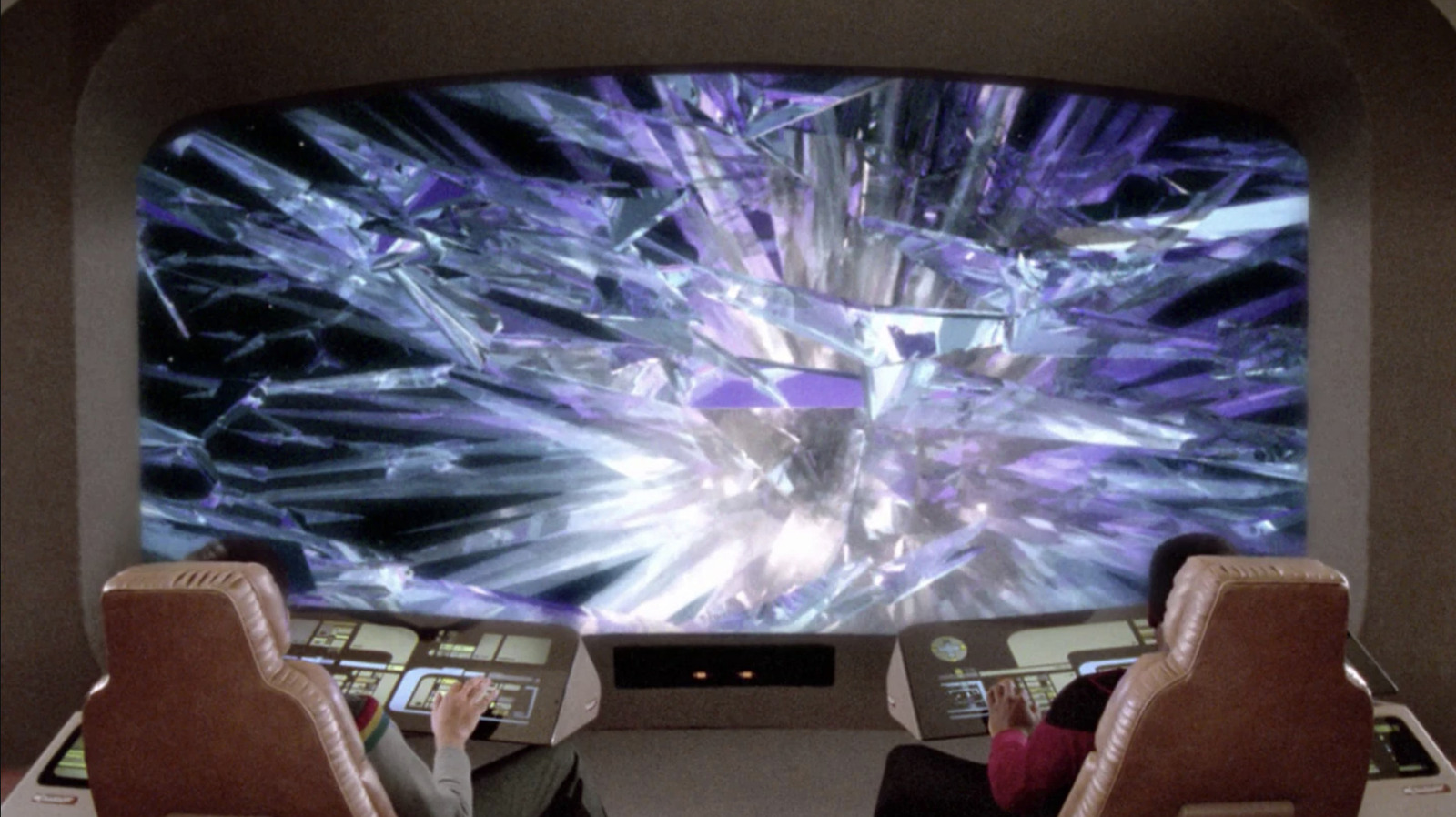
Star Trek’s Grim Take on Moby-Dick: Understanding the Crystalline Entity
The Crystalline Entity made its debut in the iconic Star Trek: The Next Generation episode “Datalore” on January 18, 1988. More than just a formidable foe, this colossal being represented an unstoppable force of nature that left the crew of the U.S.S. Enterprise grappling with a sense of helplessness. This massive entity siphoned energy from entire planets, obliterating all life in its path with a beam that annihilated everything living below. The Entity’s indifferent nature has drawn comparisons to Moby-Dick, as it operates without malice, merely unaware that its existence spells doom for entire civilizations.
In “Datalore,” the Crystalline Entity was sinisterly manipulated by Lore, the nefarious “evil twin” of the android Data. Lore, harboring resentment towards the human colony where he and Data were created, sought revenge by unleashing the Entity to wreak havoc. While the specifics of Lore’s ability to communicate with the Entity remain vague, his intention to feed the Enterprise to it ultimately failed. The episode concluded with the Entity drifting away into the void of space.
The Crystalline Entity’s reappearance in “Silicon Avatar” on October 14, 1991, intensified the Moby-Dick parallels. Dr. Kila Marr, portrayed by Ellen Geer, emerged as a passionate scientist determined to study the Entity, even as she harbored a deep-seated desire for revenge after it had obliterated her home world and taken her son’s life. Her quest for vengeance became her personal White Whale. The writers intentionally crafted this parallel, reinforcing the deep thematic connections between the two narratives.
Throughout “Silicon Avatar,” Captain Picard, played by Patrick Stewart, sought a more diplomatic approach. While Dr. Marr clamored for the Entity’s destruction, driven by her grief and anger, Picard recognized its right to exist. He aimed to establish communication and explore non-lethal solutions, a contrast that only heightened Marr’s simmering rage. This internal conflict reached a climax when Data played a recording of Marr’s deceased son, revealing unexpected connections that momentarily shifted her perspective on the android.
By the episode’s end, Dr. Marr found a means to eradicate the Entity, with Geer delivering a powerful portrayal of a woman consumed by her obsession. Notably, “Silicon Avatar” originated from a freelance script by Lawrence V. Conley. Despite initial hesitations from producer Jeri Taylor about revisiting previous storylines, the Moby-Dick thematic elements proved too compelling to ignore.
In the oral history collection “Captain’s Logs: The Unauthorized Complete Star Trek Voyages,” director Cliff Bole reflected on the production of “Silicon Avatar” and expressed a desire for deeper character exploration. He acknowledged the constraints of a 40-minute episode format that limited character development, noting the challenge of addressing complex emotional arcs. Bole empathized with Marr, finding Picard’s diplomatic solutions almost detaching in nature, especially considering the devastation wrought by the Entity.
Producer Michael Piller appreciated the episode’s foundation, recognizing its similarities to Melville’s distinguished work, while believing there was room for greater dramatic intensity. Taylor, however, admired the narrative and successfully wove Dr. Marr’s tragic journey into the script, allowing audiences to connect with her profound loss and relentless pursuit of justice. This powerful blend of science fiction and literary homage continues to captivate and challenge viewers’ perspectives on morality and existence within the Star Trek universe.



